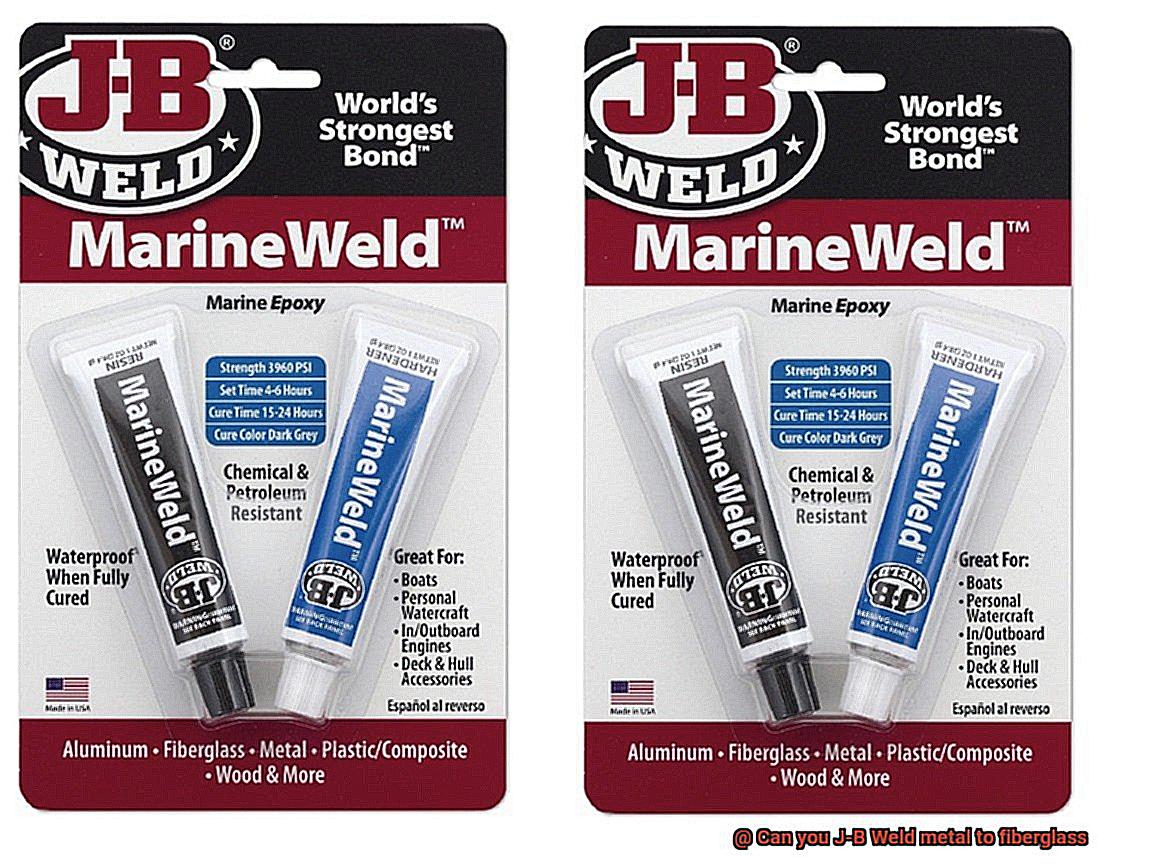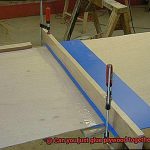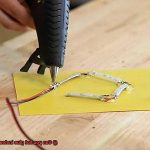Wondering if you can stick metal and fiberglass together?
I’m here to spill the beans on this fascinating conundrum as a J-B Weld expert.
You probably know J-B Weld as the go-to adhesive for all sorts of materials, but can it really fuse metal and fiberglass? The answer is a resounding yes, my friend.
But hold your horses, we’re about to dive deep into the nitty-gritty. In this blog post, we’ll uncover the magical properties of J-B Weld, walk you through the necessary prep work, and reveal the tricks to successfully bonding metal to fiberglass using this wizardry in a tube.
So buckle up and let’s unlock the secrets of J-B Welding these two bad boys together.
What is J-B Weld?
Contents
- 1 What is J-B Weld?
- 2 What are Metal and Fiberglass?
- 3 Does J-B Weld Work on Metal and Fiberglass?
- 4 Advantages of Using J-B Weld
- 5 Disadvantages of Using J-B Weld
- 6 Surface Preparation for Bonding Metal and Fiberglass with J-B Weld
- 7 Techniques for Bonding Metal and Fiberglass with J-B Weld
- 8 Alternatives to Bonding Metal and Fiberglass
- 9 Conclusion
When it comes to securing materials together, only the most durable and reliable adhesive will do. Enter J-B Weld, the epitome of strength and versatility in the world of epoxy adhesives. In this illuminating exploration, we will take a closer look at the phenomenon that is J-B Weld – what it is, how it is used, and its exceptional potential for bonding metal to fiberglass.
What is J-B Weld?
J-B Weld is an extraordinary two-part epoxy adhesive system comprised of a resin and a hardener. When these two components unite, a chemical reaction ensues, birthing an unbreakable bond that can withstand extreme heat, corrosive chemicals, and even the harshest vibrations. Its unrivaled strength and durability have made J-B Weld the adhesive of choice for countless applications.
Versatility at Its Core:
The true marvel of J-B Weld lies in its unparalleled versatility. This adhesive has the remarkable ability to bond a myriad of materials together, including metal, wood, plastic, glass, ceramic, and fiberglass. Such adaptability renders it indispensable for automotive repairs, household projects, DIY crafts, and so much more. However, when it comes to uniting metal with fiberglass, certain considerations must be taken into account.
Bonding Metal to Fiberglass:
Metal and fiberglass possess inherently distinct properties, thereby presenting a unique challenge when attempting to fuse them using J-B Weld. While this adhesive excels at bonding metal surfaces together seamlessly, achieving a reliable bond between metal and fiberglass requires extra finesse due to their divergent nature.
The Role of Surface Preparation:
To ensure optimal results when using J-B Weld or any epoxy adhesive, meticulous surface preparation is paramount. Both the metal and fiberglass surfaces must be meticulously cleaned and devoid of any greasy residues, oils, dirt, or other contaminants that may impede the bonding process. Additionally, roughening the surfaces using sandpaper or a wire brush enhances adhesion area and fortifies bond strength.
Alternative Options:
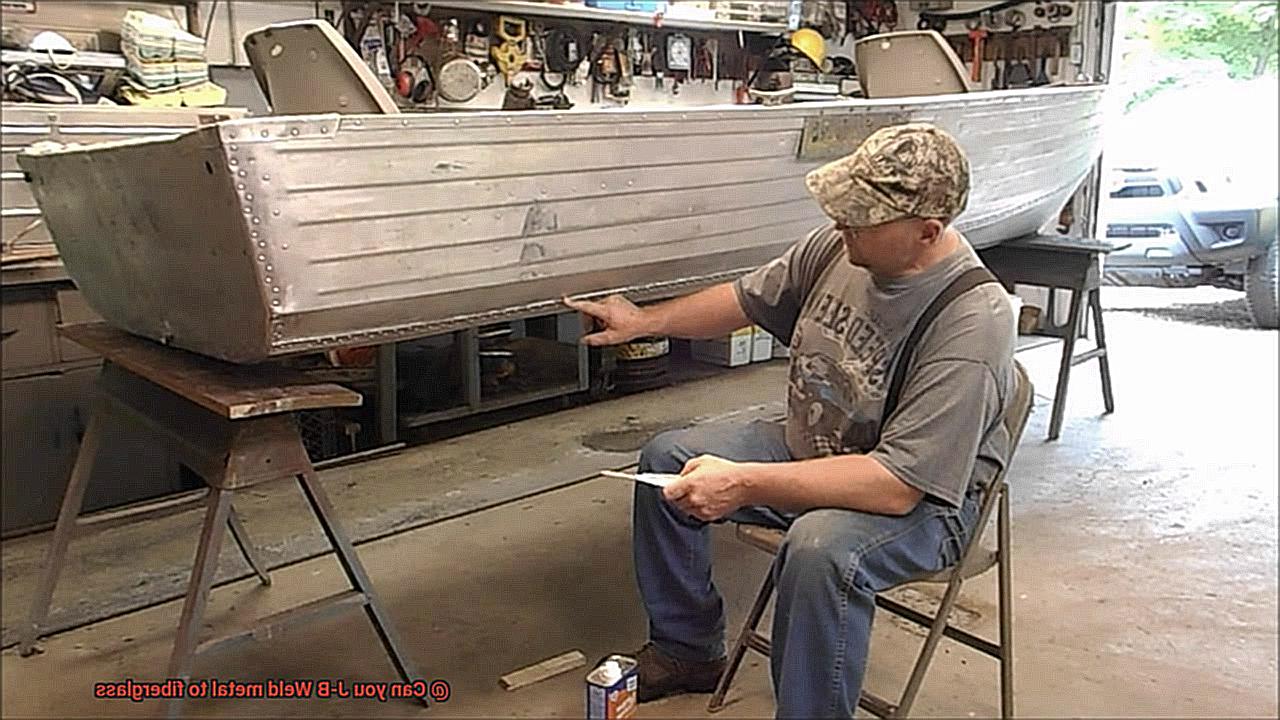
While some users have reported successful bonding experiences between metal and fiberglass using J-B Weld by employing specific techniques, it is worth noting that alternative adhesives specifically formulated for this task are available. Structural adhesives or marine-grade epoxy, for instance, may offer even stronger and more dependable bonds in such applications.
What are Metal and Fiberglass?
Metal and fiberglass, two extraordinary materials that have revolutionized countless industries, possess unique properties and exceptional strength. But what happens when you need to combine these powerhouses? Can J-B Weld, the invincible epoxy adhesive, save the day? Let’s explore the captivating world of metal and fiberglass and discover the secrets behind their bond.
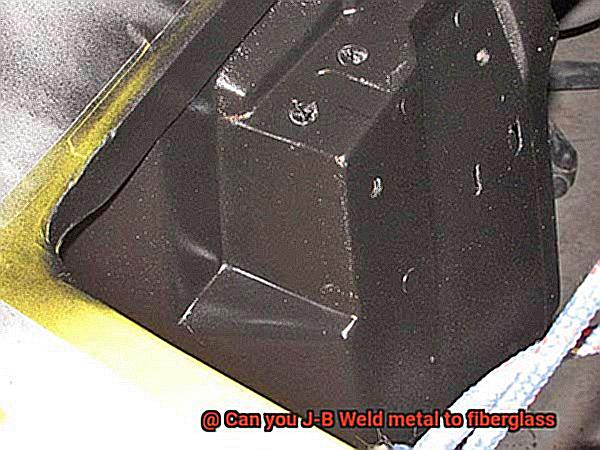
Metal: The Mighty Warrior
When we envision metal, images of unyielding strength and durability instantly come to mind. From steel to aluminum, metals display incredible tensile strength, making them ideal for heavy-duty applications. These solid materials excel at conducting electricity and heat, rendering them indispensable in the electrical and thermal industries. With various types such as ferrous metals (containing iron) and non-ferrous metals (without iron), there is a metal for every need.
Fiberglass: The Lightweight Champion
Allow me to introduce fiberglass, the lightweight warrior with a heart of glass. Composed of fine glass fibers embedded in a polymer matrix, fiberglass boasts an impressive strength-to-weight ratio. Its corrosion resistance, heat resistance, and chemical resistance make it a star player in construction, automotive manufacturing, aerospace, and marine applications. Moldable into intricate shapes using diverse manufacturing processes, fiberglass is undoubtedly a versatile material.
The Challenge of Bonding Metal and Fiberglass
While metal and fiberglass may seem like a match made in heaven, their differences can pose challenges when attempting to join them together. Metals are rigid and inflexible, while fiberglass exhibits some degree of flexibility. This dissimilarity can impact the overall strength of the bond. Additionally, the surface roughness of metal versus fiberglass can affect adhesion strength. Coefficient of thermal expansion (CTE) is another crucial factor to consider since metals and fiberglass expand and contract at different rates with temperature changes.
Finding the Perfect Bond:
To ensure a robust and dependable bond between metal and fiberglass, it is vital to evaluate the specific materials and intended application. While J-B Weld may offer a solution, alternative adhesives formulated explicitly for metal-to-fiberglass bonding might yield even stronger results. Proper surface preparation, including meticulous cleaning and roughening of the surfaces, is essential to enhance adhesion. If necessary, seeking professional advice or exploring other bonding methods can help achieve the desired bond.
Does J-B Weld Work on Metal and Fiberglass?
When it comes to the question of whether J-B Weld works on metal and fiberglass, the answer is a resounding yes. J-B Weld, the superhero of epoxy adhesives, possesses incredible bonding capabilities that can conquer both metal and fiberglass surfaces with ease.
Let’s start by delving into the world of J-B Weld. This adhesive powerhouse is specifically formulated to create a formidable bond on various metal surfaces, including steel, aluminum, and iron. Its two-part epoxy mixture, consisting of a resin and a hardener, combines to form an indomitable adhesive that can withstand even the toughest challenges.
But what about fiberglass? Here’s where things get intriguing. Fiberglass, with its composite structure of glass fibers embedded in a resin matrix, presents a unique set of properties compared to pure metal. However, fear not. J-B Weld can still be used on fiberglass surfaces, but there are a few key factors to keep in mind.
First and foremost, surface preparation is paramount. In the realm of bonding, cleanliness reigns supreme. To ensure a successful bond between metal and fiberglass using J-B Weld, it is crucial to thoroughly clean and sand both surfaces before application. Dirt and grease must be banished.
To take the bonding game to new heights, lightly sanding the fiberglass will provide a rougher texture for the epoxy adhesive to latch onto. Think of it as giving your bond an extra dose of strength that will keep it steadfast.
Of course, selecting the right J-B Weld product is vital. With different formulations available for various applications, it is imperative to choose one that is suitable for both metal and fiberglass bonding. Carefully reading and following the instructions provided is key.
Now comes the exciting part – applying the J-B Weld. Mix the epoxy resin and hardener in the correct ratio as specified by the manufacturer and apply it evenly to both surfaces. Don’t forget to apply some pressure or use clamps to hold the bonded surfaces together while the adhesive cures. We want to prevent any sneaky separations.
While J-B Weld can be a hero in the realm of metal and fiberglass bonding, it is important to consider the specific requirements of your project. Factors such as size, weight, intended use, and environmental conditions may influence whether J-B Weld is the best choice or if alternative adhesives or bonding methods should be explored.
Advantages of Using J-B Weld
Today, we embark on a journey into the realm of adhesive supremacy to discover the wonders of J-B Weld. If you seek a robust, versatile, and cost-effective solution for bonding metal to fiberglass, look no further. J-B Weld is here to save the day.
Unleash the Power of Bonding:

When it comes to bonding metal to fiberglass, J-B Weld stands as your ultimate ally. Its exceptional bonding strength creates a secure union between these two materials, withstanding all forms of stresses and strains. Say goodbye to weak bonds and embrace a connection that will never let you down.
Versatility: J-B Weld Saves the Day… Every Day.
J-B Weld is not limited to metal and fiberglass; it is a jack-of-all-trades. From ceramics to wood and everything in between, this superhero adhesive can tackle any project you throw at it. Need to repair a cracked metal part? Piece together fiberglass components? J-B Weld has got your back.
Easy Application: Smooth as Silk
Bid farewell to complicated applications that require an advanced degree in chemistry. J-B Weld is designed with simplicity in mind. Just mix the epoxy resin and hardener in equal parts from the separate tubes, apply, and get ready for action. With a workable time of 15-25 minutes, you have ample opportunity to make adjustments before it sets.
Heat Resistance: Battle the Flames.
J-B Weld doesn’t shy away from heat; it embraces it. Once cured, this adhesive can handle scorching temperatures up to 550 degrees Fahrenheit (288 degrees Celsius). So go ahead and use it on projects where things get hot under the hood or on the water—J-B Weld won’t let you down.
Chemical Resistance: Conquer the Elements.
J-B Weld is more than just a heat-resistant hero; it’s also armed with chemical resistance powers. It can withstand exposure to various chemicals and solvents without weakening or losing its bond strength. Oil, fuel, water, you name it—J-B Weld can handle it.
Cost-effectiveness: Save the Day and Your Wallet
Fighting evil doesn’t have to break the bank. J-B Weld offers a budget-friendly alternative to expensive welding or specialized adhesives. It’s readily available and affordable, making it the go-to choice for both small repairs and ambitious projects.
Disadvantages of Using J-B Weld
In our previous section, we sang praises about the mighty J-B Weld and its ability to bond metal to fiberglass with unwavering strength. However, even J-B Weld has its kryptonite. In this segment, let’s explore the disadvantages of using J-B Weld for this specific application. So, grab your cape and let’s dive into the dark side of this adhesive.
Disadvantage 1: Limited Flexibility:
While J-B Weld boasts remarkable strength, it falls short when it comes to flexibility. Fiberglass, being more pliable than metal, can exert stress on the bond line over time. This strain may lead to cracking or delamination of the adhesive, compromising the bond’s integrity. Imagine a superhero unable to adapt to changing circumstances; that’s J-B Weld’s Achilles’ heel.
Disadvantage 2: Vulnerability to UV Radiation:
Sunlight may be a source of life for many things, but not for J-B Weld. Exposure to UV radiation can gradually degrade and weaken the adhesive. If your bonded metal and fiberglass are exposed to extended periods of sunlight, it may result in a weakened bond that could eventually fail. The sun’s rays become the ultimate nemesis for this adhesive superhero.
Disadvantage 3: Limited Temperature Resistance:
J-B Weld is not invincible against high temperatures. Prolonged exposure to heat can cause the adhesive to soften or even melt, jeopardizing the bond’s strength and durability. Just like a superhero vulnerable to extreme heat, J-B Weld must retreat from scorching conditions. Thus, it is crucial to consider the temperature conditions your application will face before relying on J-B Weld.
Disadvantage 4: Proper Surface Preparation:
For J-B Weld’s magic to work wonders, proper surface preparation is essential. Both metal and fiberglass surfaces should be pristine, dry, and free from contaminants before applying the adhesive. Neglecting this step can weaken or even break the bond entirely. Just as a superhero needs to prepare before a battle, J-B Weld requires meticulous attention to detail during the preparation phase.
Disadvantage 5: Difficulty in Removal:
Once J-B Weld cures, it forms an incredibly strong bond that can be quite stubborn to break apart. While this strength is advantageous in many cases, it becomes a disadvantage when repairs or modifications are necessary, or if the metal and fiberglass need to be separated. Be prepared for a challenging removal process if needed, as this superhero adhesive doesn’t easily relinquish its hold.
Surface Preparation for Bonding Metal and Fiberglass with J-B Weld
Achieving a strong and durable bond between metal and fiberglass requires meticulous surface preparation when using J-B Weld. Think of it as preparing for a battle, where attention to detail is key. Let’s delve into the sub-topics to better understand the importance of surface preparation:
- Thorough Cleaning: The first step is to thoroughly clean both the metal and fiberglass surfaces. Removing dirt, grease, oil, and other contaminants is crucial as they can hinder the adhesive’s ability to create a strong bond. Use a degreaser or mild detergent, rinse with water, and ensure complete drying.
- Roughening Up the Surfaces: After cleaning, lightly sand both the metal and fiberglass surfaces with fine-grit sandpaper. This gentle roughening improves adhesion by creating a textured surface that allows the adhesive to grip securely.
- Removing Residue and Dust: Once sanded, remove any residue or dust from the surfaces. A clean cloth or compressed air can be used to wipe away loose particles. Ensuring debris-free surfaces promotes better adhesion.
- Applying a Primer: Enhance the bond between metal and fiberglass by applying a suitable primer. Primers are specifically designed to improve adhesion. Follow the manufacturer’s instructions for applying the primer to both materials.
- Following Manufacturer’s Instructions: Before applying J-B Weld, carefully read and follow the instructions provided by the manufacturer. Different types of J-B Weld may have specific application instructions or curing times. Properly mix the adhesive according to instructions and apply it evenly on both surfaces.
- Applying Even Pressure: Once the adhesive is applied, align and press the metal and fiberglass surfaces together with firm and even pressure. This ensures maximum contact between the materials. Depending on the J-B Weld product used, clamping or securing the bonded parts may be necessary during curing.
- Allowing for Full Cure: After the adhesive has cured, allow it to fully cure for the recommended time before subjecting the bonded assembly to stress or load. This ensures the bond reaches its maximum strength.
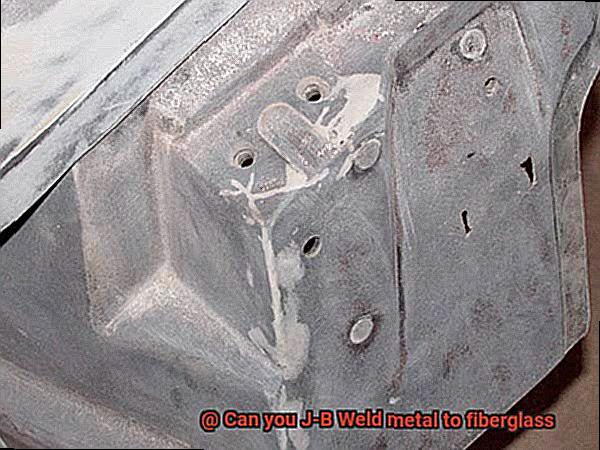
Techniques for Bonding Metal and Fiberglass with J-B Weld
When it comes to bonding metal and fiberglass, J-B Weld is a go-to adhesive known for its incredible strength and versatility. Whether you’re repairing a car, building a boat, or working on a DIY project, mastering the techniques for using J-B Weld can make all the difference in achieving a bond that is durable and long-lasting. In this article, we will guide you through step-by-step instructions to ensure a successful bond between metal and fiberglass using J-B Weld.
Step 1: Prepare the Surfaces
Before diving into the adhesive process, it’s essential to prepare the surfaces properly. Clean both the metal and fiberglass surfaces using a mild detergent and water to remove any dirt, grease, or oil. Rinse thoroughly and allow them to dry completely. This ensures that the adhesive will adhere well to the surfaces.
Step 2: Roughen Up the Surfaces
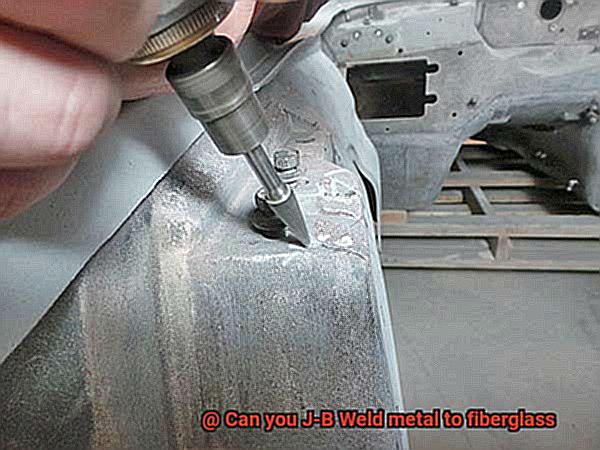
To enhance adhesion, lightly sand both the metal and fiberglass surfaces using fine-grit sandpaper. This creates a rough texture that allows the adhesive to grip onto the surfaces more effectively. Be sure to remove any dust or debris before proceeding.
Step 3: Mix the J-B Weld Epoxy Adhesive
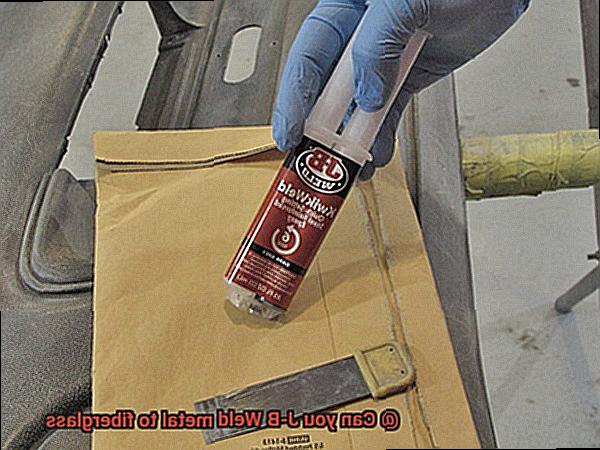
Follow the instructions provided on the packaging to mix the J-B Weld epoxy adhesive properly. Pay close attention to the mixing ratios and directions to achieve optimal results. It’s important to get this step right as it determines the overall strength of the bond.
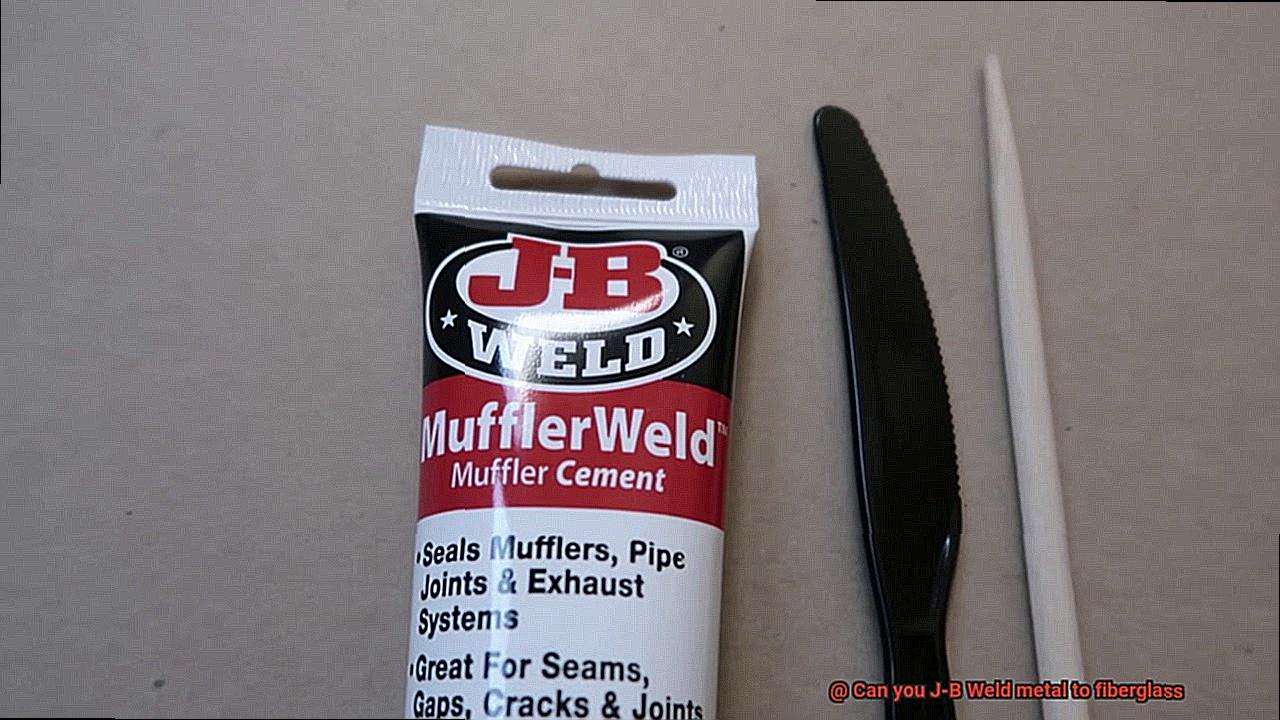
Step 4: Apply the Adhesive
Using a brush or spatula, apply a thin layer of mixed J-B Weld epoxy adhesive to both the metal and fiberglass surfaces that will be bonded. Ensure even coverage to promote a strong bond. The adhesive should be spread smoothly and evenly over the surfaces.
Step 5: Joining the Surfaces
Carefully place the metal and fiberglass surfaces together, ensuring good contact between the two materials. Apply firm pressure, and if necessary, use clamps or weights to hold them in place while the adhesive cures. This step is crucial for achieving a tight bond without any gaps.
Step 6: Allow for Full Cure
The curing time for J-B Weld can vary based on temperature and humidity. It’s recommended to allow at least 24 hours for the adhesive to fully cure before subjecting the bonded materials to any stress or load. This patience ensures that the bond reaches its maximum strength.
Step 7: Inspect and Reinforce
After the adhesive has cured, inspect the bond for any gaps or weak spots. If needed, apply additional adhesive to reinforce the bond and ensure its strength. It’s always better to be safe than sorry, so take the time to check and reinforce if necessary.
Alternatives to Bonding Metal and Fiberglass
When it comes to bonding metal and fiberglass, there are several alternatives to consider. Each alternative offers its own unique benefits and considerations, so let’s explore them further:
- Epoxy Adhesive: Epoxy adhesives are known for their strong bonding capabilities and are a great option for joining metal and fiberglass surfaces. They offer durability and resistance to heat, water, and chemicals. It’s important to choose an epoxy specifically designed for bonding metal and fiberglass to ensure optimal results.
- Structural Adhesive: Structural adhesives are formulated to provide high-strength bonds between different materials, including metal and fiberglass. They have exceptional tensile strength and can withstand heavy loads or stress. There are different types of structural adhesives available, such as acrylic, polyurethane, and cyanoacrylate, each with its own properties and application requirements.
- Mechanical Fastening: If you prefer a more traditional approach, mechanical fastening is another alternative. This involves using screws, bolts, or rivets to secure the metal and fiberglass pieces together. Mechanical fastening offers reliability and easy disassembly if needed. However, some projects may require additional reinforcement or support depending on the specific requirements.
- Welding: For those who are comfortable with more advanced techniques, welding can be considered as an alternative bonding method. Welding involves melting the metal parts together using heat or pressure to create a strong joint. However, it’s important to note that excessive heat can damage or deform certain types of fiberglass materials, so compatibility should be carefully evaluated.
- Adhesive Tapes or Films: Adhesive tapes or films can serve as temporary bonding solutions for lightweight or temporary applications. These double-sided tapes or films provide a quick and easy way to join metal and fiberglass surfaces. However, they may not offer the same level of strength and durability as other methods.
nbtL75CXmuQ” >
Also Read: Can You Put JB Weld Over JB Weld? – The Welding Guru
Conclusion
Yes, it is possible to use J-B Weld to bond metal to fiberglass. This versatile adhesive is known for its strength and durability, making it a popular choice for joining different materials together. Whether you want to attach a metal bracket to a fiberglass surface or create a strong bond between a metal component and a fiberglass structure, J-B Weld can get the job done.
With its unique two-part epoxy formula, J-B Weld creates a powerful bond that can withstand various stresses and strains. It forms a chemical reaction when the two components are mixed together, creating a strong and permanent bond between the metal and fiberglass surfaces.
When applying J-B Weld, it is important to prepare both the metal and fiberglass surfaces properly. Clean the surfaces thoroughly to remove any dirt, grease, or contaminants that could interfere with the bonding process. Roughen up the surfaces slightly using sandpaper or a wire brush to provide better adhesion.
Next, mix equal parts of the J-B Weld epoxy resin and hardener on a disposable surface. Apply the mixture evenly onto both the metal and fiberglass surfaces using a brush or spatula. Make sure to cover the entire area that needs bonding.
Once applied, press the metal and fiberglass surfaces firmly together. Use clamps or weights to hold them in place while the adhesive cures. Follow the manufacturer’s instructions for curing time, but generally allow at least 24 hours for full strength.
After curing, you will have a strong bond between your metal and fiberglass components. However, keep in mind that J-B Weld may not be suitable for all applications. Factors such as temperature extremes or constant exposure to water may affect its performance.
In conclusion, J-B Weld can indeed be used to bond metal to fiberglass effectively. Its strength and durability make it an excellent choice for joining these two materials together. Just remember to prepare the surfaces properly and follow the instructions carefully for best results.

